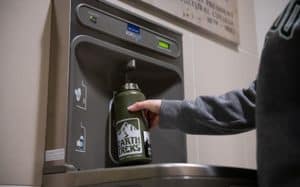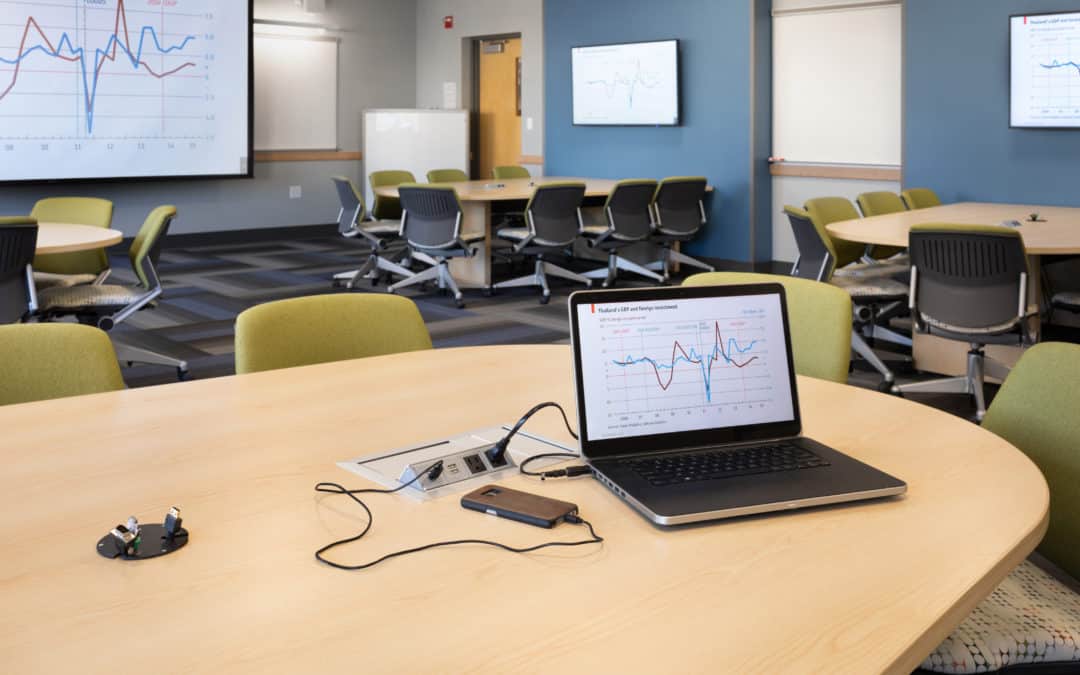INTRODUCTION
With many K-12 schools, colleges and universities reopening or planning to reopen, physical classroom design will change post COVID-19. Administrators and decision-makers will need to ensure the safety of students, educators and staff.
With elementary schools, the challenge to keep small kids away from each other presents issues. Meanwhile, on college campuses, the thought of having lecture halls with hundreds of students seems impossible.
However, the physical setup of classrooms and schools contribute to student learning, making it one of the most important factors to consider when planning to reopen safely.
The effects of COVID-19 on the education industry will be long-term. Since this is new for many educational entities, it might be difficult to know where to begin. Here are some renovations to consider as you reopen your learning space.
CONSIDER ADDING BARRIERS/REPURPOSE OR REMODEL LARGER SPACES
Adding physical barriers, such as sneeze guards and partitions, especially in areas where it is difficult for people to remain at least six feet apart (e.g. reception desks), can help maintain a healthy environment. The barriers also can be used during lunchtime as your school may consider having children eat at their desk rather than in the cafeteria. Another type of barrier is a partition system, which shields against noise and visual disruptions and provides safe social distancing for communal spaces.
Physical guides, such as tape on floors or sidewalks and signs on walls, will ensure your staff and children remain socially distant and stay consistent with the flow of hallways (e.g. one way). Plastic flexible screens can be put in bathrooms, too.
Large non-instructional spaces, like gymnasiums, auditoriums and cafeterias, can be reconfigured for learning. Consider installing permanent sliding dividers or glass walls to isolate spaces and those in them.
MAKE OTHER INTERNAL UPGRADES
Have you looked at your school’s HVAC system recently? Proper design, installation and maintenance of HVAC systems are key to maintaining healthier indoor air quality. According to the American Society of Heating, Refrigerating and Air-Conditioning Engineers (ASHRAE), prior to opening, your staff should assess the current HVAC system ventilation, exhaust, maintenance schedules and the control sequences.
If your school is fortunate enough to have air-conditioning, consider opening windows instead to help prevent the spread of germs. In fact, now may be the time to upgrade your school’s windows to conserve energy, provide the greatest possible security and ultimately boost student performance (by more exposure to natural light).
To practice good hygiene, some school districts have turned off all drinking fountains and recommended students bring in their own water bottles. That means you will probably need to replace the drinking fountains with bottle filling stations.
Lastly, you should consider making your bathrooms no-touch by installing automated paper towel dispensers, sensor faucets, sensor toilets and hands-free soap dispensers.
FOR MORE INFORMATION
FoxArneson specializes in both design and building services for the education industry, including the remodeling or construction needs to help maximize functional space, safely.

